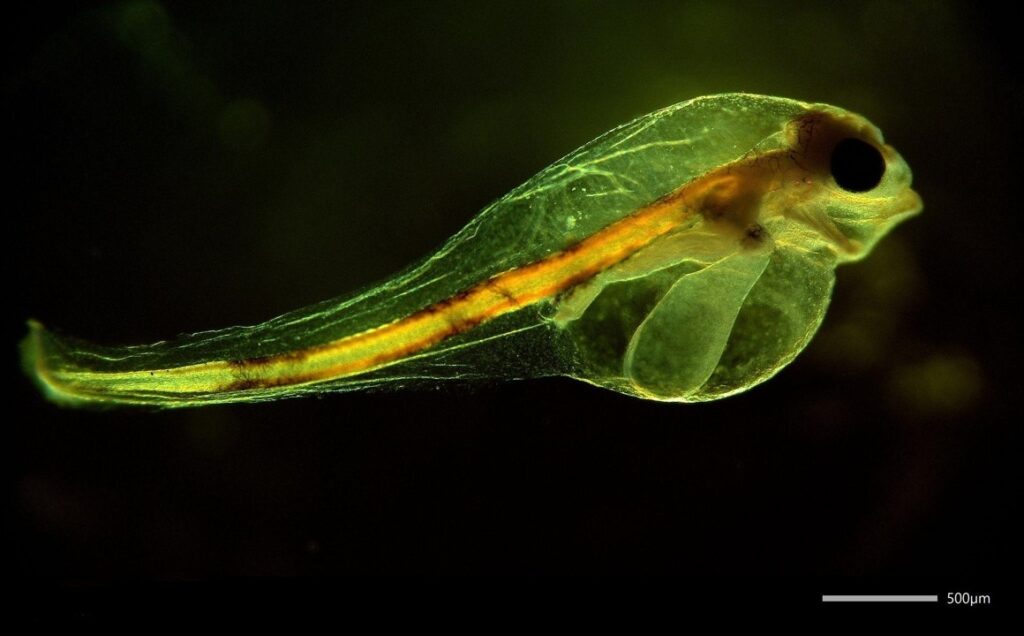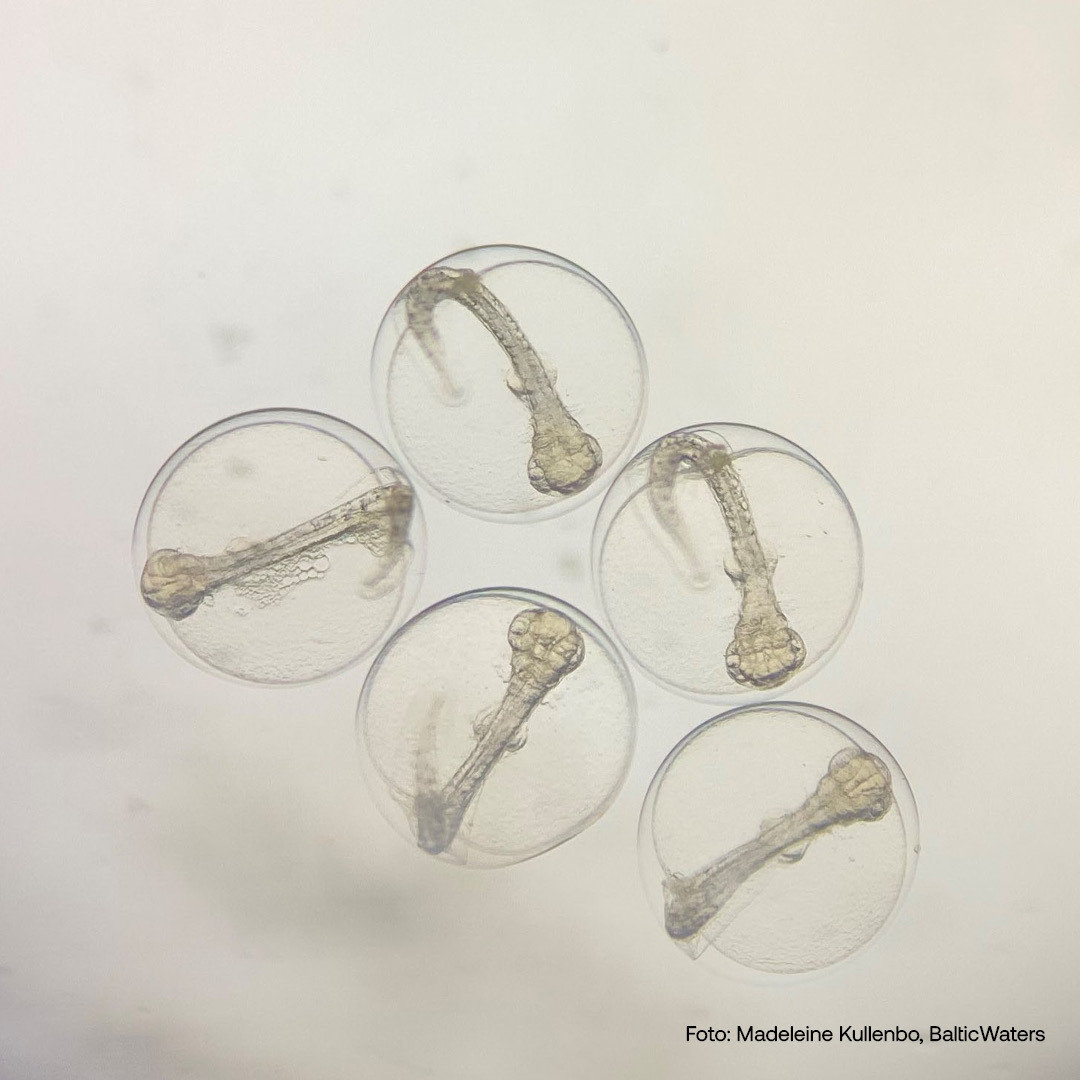An essential aspect of the project ReCod – release of small cod in the Baltic Sea – is the process of release. It’s crucial that the small cod larvae are adapted to the conditions prevailing in the Baltic Sea where they are released; otherwise, there’s a significant risk that they won’t survive.
PhD-students Maddi Garate-Olaizola and Neele Schmidt from Uppsala University have spent considerable time at the research station Ar on Gotland, where the ReCod project is being carried out, to investigate how the adaptation of the larvae from life at the station to the sea should occur. In the scientific article Acclimatizing laboratory-reared hatchling cod (Gadus morhua) to salinity conditions in the Baltic Sea, Maddi and Neele conducted experiments examining how cod eggs and larvae can adapt from the high salinity in the station’s tanks to the lower salinity present in the Baltic Sea. They also explored how a decrease in salinity affects the survival, hatching capability, and buoyancy of both eggs and larvae.
Why is the salinity at the research station different from that in the Baltic Sea?
Successful cod spawning requires a salinity of at least 11 parts per thousand and an oxygen level not lower than 2 mg/l. Currently, there is only one place left in the Baltic Sea with the oxygen and salinity levels necessary for successful spawning – the Bornholm Basin. In the locations in the Baltic Sea where the cod larvae from the ReCod project are released, the salinity is 7 parts per thousand. At the research station, the salinity in the tanks is 17 parts per thousand during the spawning period, with an oxygen level of approximately 10 mg/l, which is optimal for successful spawning and the survival of the eggs.

Cod larvae with yulk-sac. Photo: Neele Schmidt, Uppsala University.
Maddi and Neele’s experiments reveal that a sudden decrease in salinity, from 17 parts per thousand down to 7 parts per thousand, ten days after the eggs are fertilized, at first hatching, is the most successful method of adaptation. The closer the egg is to hatching, the greater the chance of successful adaptation to the new salinity.
The results are not only interesting but also crucial for ensuring the maximum survival of the cod larvae released within the ReCod project.
Would you like to read more about Neele and Maddi’s experiments? Here you can read the full scientific article Acclimatizing laboratory-reared hatchling cod (Gadus morhua) to salinity conditions in the Baltic Sea.

More about the ReCod project
Currently, there are only a few places in the Baltic Sea with the oxygen and salinity levels required for cod to successfully reproduce – conditions that make it difficult for an overfished and weakened population to recover. The project ReCod – release of small cod in the Baltic Sea aims to test whether it is possible to help cod pass the vulnerable egg stage and thus increase the number of small cod in the sea as a step in strengthening the fish population. The project will conduct trials with cod larvae released to the sea and examine survival rate, their capacity to establish in new locations, and estimate at what cost it can be done. If the measure is successful, it could provide a template for future large-scale efforts to strengthen the stock.
The demonstration project ReCod is carried out at the research station Ar on Gotland – in the heart of the Baltic Sea. Baltic cod from the eastern stock is caught in order to reproduce via natural spawning at the research station. The project aims to annually rear and release approximately 1–1.5 million cod larvae, releases that will be monitored through annual test fishing in the selected trial areas.
Would you like to know more about ReCod? Visit the project’s website for further information.

